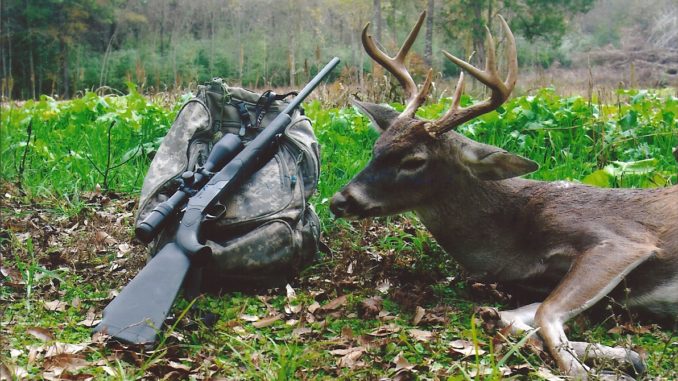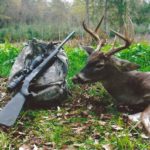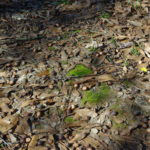
Harbingers of early spring all around
The magazine in the doctor’s office referred to Grand Teton National Park as a nature lover’s paradise. No doubt it is, especially in the winter when the game descends the mountains and walks around with the humans.
The same can be said for Louisiana; not only is it the Sportsman’s Paradise, it is indeed a nature lover’s paradise also. The other day I drove down to New Orleans to visit the Louisiana Sportsman office, and as I approached the 310 Split saw not only the eagle’s nest, but the two adults were sitting in the tree around the nest. I spotted another eagle not too far away in another tree.
On the way back to Baton Rouge an eagle was perched in a small tree looking over the marsh land north of I-10 and as I crossed the lake I could see brown pelicans sitting on the pilings in the lake. Not many places one can go and see sights such as these in just a two-hour trip. Indeed we are blessed with great hunting and fishing along with lots of nature to see and enjoy.
I mentioned in my January column that when the weather is right in the last month of hunting, it is time to be in the stand. On Jan. 4, I was in the stand at daylight overlooking a bend in a hardwood drain. My weather meter had the temperature at 6 a.m. at 18 degrees, and the barometric pressure was 30.10. I knew the deer would be moving at some point, and at 7:30 they did not disappoint me. Deer were in a thicket about 30 yards away, and should have followed the edge of the pine plantation and pass by my stand within easy shooting range.
But the deer seemed to be hanging tight in the thicket, and one actually blew like it had winded something. I knew it could not be me because of the wind direction, and as the deer finally started moving I saw what had them upset. A striped skunk was moving between me and the deer, and this group of does and fawns swayed out into the dim-lighted pine plantation; apparently they were giving the skunk plenty of room for his morning excursion.
Another deer, a small-racked buck that had the look of a 4-year-old, was following the does. The buck was moving slowly, and had the look of aggression as it stiff-walked through the opening with its hide ruffled up. I had an easy shot, but had already killed two low-end adults, and was looking more for a high-end adult.
At 8 a.m., I decided to move from this location and set-up at the other end of the drain. I elected to sit on the ground with my back to the rising sun, and at 9 a.m. saw two more deer, but they disappeared across the drain up the ridge to a cut-over.
I was hunting at the site where I had killed a 4½-year-old 7-pointer back in mid-November. This buck was a low-end adult with a small, heavy rack, only a 12-inch inside spread, but it did weigh 165. As I have mentioned before, dominant pine plantation habitat has the tendency to produce a lot of average or below-average bucks, mainly due to the lack of adequate forage needed for good growth and antler development.
At 9:30, another group of does and fawns came down from the ridge, and I opted to do my part with the management program on this property, and collected a 1½-year-old doe. I was hunting with three other guys, and all killed deer this morning. Once again the ability to be in the woods when the conditions dictate it is time to hunt paid off.
I have heard a lot of talk around the state about how poor the deer season has been. Of course with the super-abundant acorn crop this year, it is not surprising to hear hunters talk about how bad the hunting is. Most hunters are geared to hunting a permanent stand over a food plot and feeder, and when nature provides an abundant mast crop, they simply do not attempt to move to where the deer are. It will be interesting to see what the statewide harvest is once LDWF looks at the reported kills from the statewide tagging program and the deer programs available to landowners.
Some of the DMAP clubs in Areas 1 and 6 will be taking advantage of the late gun season in February. I am very much interested in seeing if this is a success since I advocated the need for a late season for hunters in these areas where the breeding occurs in January and February.
There have been some good deer killed this year, despite the lack of deer sightings. Once the season ends, it is time to get out the measuring tapes and see what the “tale of the tape” is. I do not like to green score deer because the score means absolutely nothing. The rack of a deer must air dry for 60 days before it can be officially scored.
There are numerous avenues a hunter can take to get his rack officially scored. One opportunity is the 2012 Louisiana Sportsmen’s Show March 9-11 in Gonzales. I will be there to measure antlers for the contest, and deer will be officially scored. If the rack qualifies for national or state recognition, the hunter will be given the paperwork necessary to enter the deer into the record books. The contest is free, and all legal entrants will be included in a drawing for a Yamaha ATV.
Another opportunity is to enter the Bowie Outfitters Big Buck Contest. There is no contest fee, and all a hunter has to do is fill out the application and submit it and a photograph to the Baton Rouge store. Any legally killed buck can be entered in the contest, even a spike. The big winner last year was a freaky rack from the Morganza Floodway. The grand prize is decided by a random drawing; therefore, anyone entering any size buck is in the drawing. I will officially score the deer entered in the contest prior to the awards program in May.
From what I was seeing in early January, it appears there may be an early spring. The red maple trees were beginning to flower at the end of December, violets and bluets in the open areas were beginning to flower and the yellow jessamine vines were putting out their flower buds.
Some of you may have even heard a gobble or two while sitting in the stand in January. I have been watching several groups of jakes from the 2011 spring hatch, and have captured a couple of longbeards on camera. Yes, from what I have seen, it appears the grunting is just about over and it’s time for the gobbling to begin.

